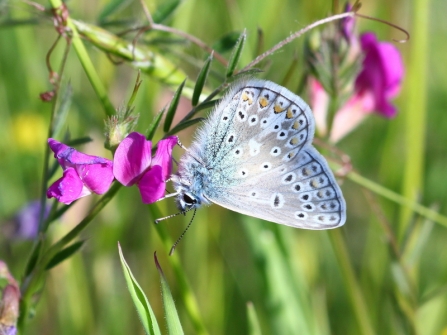Perhaps just as spectacular is the nature reserve’s botanical diversity; the steep southern slope is clothed in wild flowers like wild thyme, vetches and rock rose. This is in part due to the low nutrient soils but this also means the plants appear in miniature. Other examples include the gorgeous pyramidal orchid, the Island speciality early gentian and, later in the summer, eyebright and small scabious. As many as 35 species of wildflower can be found in just one square metre!
If we are to maintain such high levels of diversity in flora and fauna here we must provide a habitat with an equally diverse set of environmental conditions to satisfy the species we’re trying to protect. Our research has shown us that a large number of the more delicate flowers and rarer invertebrates that live at Arreton Down require areas of shorter grass with bare patches of earth that allow the warmth of the sun to reach the soil.
To maintain these short areas of grass Arreton Down is grazed by cattle each winter. Wild rabbits help to maintain the short grass but some hand cutting is also required to keep scrub (such as brambles and saplings) under control. Throughout winter, our dedicated volunteers help to clear any scrub and ensure the nature reserve offers the ideal habitat for rare invertebrates.
The nature reserve also has many disused chalk pits that, if managed appropriately, provide the perfect habitat for such species to thrive. The steep pits allow for shallower soil, shorter turf and seasonal warmth as the steep slopes absorb more of the sun’s rays.

